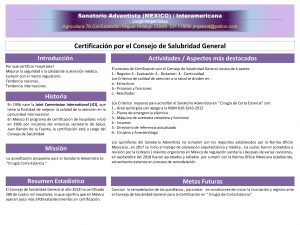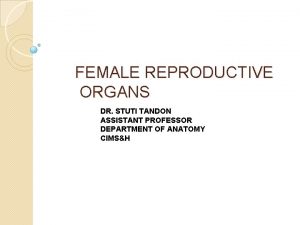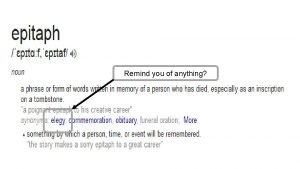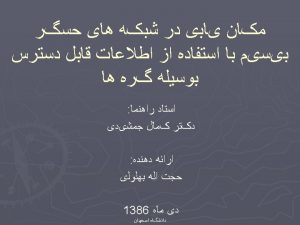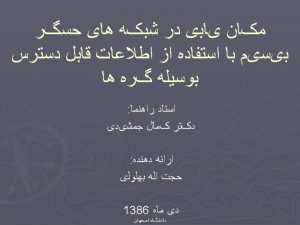Jose de Escandon Jose de Escandon is known




- Slides: 4

Jose de Escandon • Jose de Escandon is known as the colonizer and first governor of the colony of Nuevo Santander. • By 1748, he was made governor and captain general of Nuevo Santander, and began establishing settlements along the Rio Grande. • In 1755 he granted permission to Tomas Sanchez de la Barrera y Garza to found Laredo, the largest and most successful permanent Spanish settlement in Southwest Texas.

Antonio Margil de Jesus • During the “Chicken War” of 1719, a war fought between Spain and France, the six missions and presidios in East Texas were all abandoned. The entire Spanish population withdrew to San Antonio. • The following February, Margil decided to rebuild and founded San Jose y San Miguel de Aguayo, which became the most successful of all Spanish Missions.

Location of Mission San Francisco de los Tejas Damian Massanet • Damián Massanet was the founder of the first Spanish mission in East Texas, Mission San Francisco de los Tejas, which was founded near the Neches River. • In 1693, after continued disputes with the Caddo Indians, Massanet chose to burn the mission and return to Mexico. • Massanet's Tejas mission lasted for only three years, but it marked the first step in Spain's efforts to bring the lands of Texas under the Spanish flag.

Francisco Hidalgo • Hidalgo was an advocate of renewed missionary efforts among the Caddo Indians. • He assisted in the founding of the mission San Juan Bautista, which opened January 1, 1700. • He remained at the mission until East Texas was abandoned by the Spanish during the Chicken War of 1719. • Hidalgo took up residence at San Antonio de Valero Mission in San Antonio and remained there until 1725, when he resigned and asked permission to preach among the Apaches.

